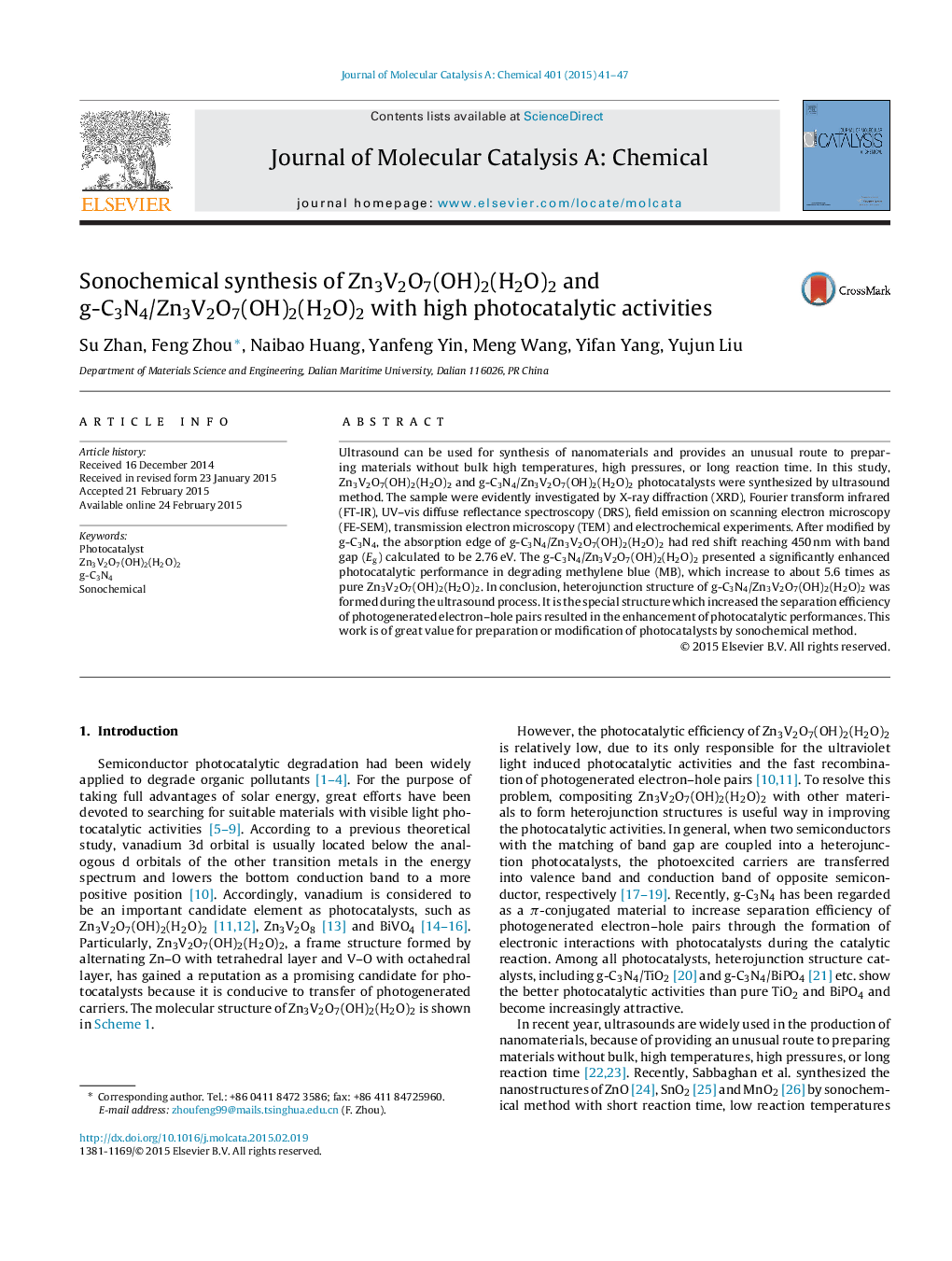| Article ID | Journal | Published Year | Pages | File Type |
|---|---|---|---|---|
| 65044 | Journal of Molecular Catalysis A: Chemical | 2015 | 7 Pages |
•A photocatalyst was synthesized by sonochemical method.•A heterojunction structure of g-C3N4 and Zn3V2O7(OH)2(H2O)2 formed during sonochemical process.•The g-C3N4/Zn3V2O7(OH)2(H2O)2 photocatalyst possesses high photocatalytic activity under visible light.
Ultrasound can be used for synthesis of nanomaterials and provides an unusual route to preparing materials without bulk high temperatures, high pressures, or long reaction time. In this study, Zn3V2O7(OH)2(H2O)2 and g-C3N4/Zn3V2O7(OH)2(H2O)2 photocatalysts were synthesized by ultrasound method. The sample were evidently investigated by X-ray diffraction (XRD), Fourier transform infrared (FT-IR), UV–vis diffuse reflectance spectroscopy (DRS), field emission on scanning electron microscopy (FE-SEM), transmission electron microscopy (TEM) and electrochemical experiments. After modified by g-C3N4, the absorption edge of g-C3N4/Zn3V2O7(OH)2(H2O)2 had red shift reaching 450 nm with band gap (Eg) calculated to be 2.76 eV. The g-C3N4/Zn3V2O7(OH)2(H2O)2 presented a significantly enhanced photocatalytic performance in degrading methylene blue (MB), which increase to about 5.6 times as pure Zn3V2O7(OH)2(H2O)2. In conclusion, heterojunction structure of g-C3N4/Zn3V2O7(OH)2(H2O)2 was formed during the ultrasound process. It is the special structure which increased the separation efficiency of photogenerated electron–hole pairs resulted in the enhancement of photocatalytic performances. This work is of great value for preparation or modification of photocatalysts by sonochemical method.
Graphical abstractFigure optionsDownload full-size imageDownload high-quality image (261 K)Download as PowerPoint slide
